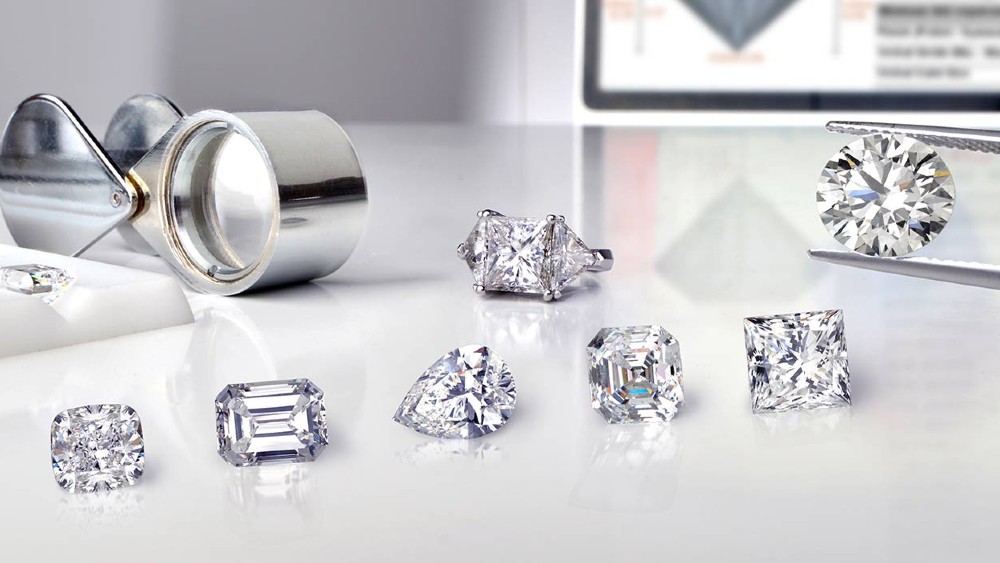In recent years, the diamond industry has experienced a dramatic shift with the rise of loose man-made diamonds. These diamonds, also known as loose man made diamonds, are cultivated in laboratories using advanced technology that replicates the natural conditions under which diamonds form in the Earth’s crust. As consumer demand for sustainable and ethically sourced products continues to grow, man-made diamonds are becoming an increasingly popular choice. In this article, we explore the rise of loose man-made diamonds, their benefits, and their impact on the diamond market.
What Are Loose Man-Made Diamonds?
Loose man-made diamonds are diamonds that have been created in a laboratory setting rather than being mined from the Earth. They are chemically, physically, and optically identical to natural diamonds, with the same carbon crystal structure. The process of creating these diamonds involves either High Pressure High Temperature (HPHT) or Chemical Vapor Deposition (CVD) techniques.
- High Pressure High Temperature (HPHT): This method mimics the natural conditions of the Earth’s mantle by applying extreme heat and pressure to carbon. It typically uses a small diamond seed to stimulate the growth of a larger diamond.
- Chemical Vapor Deposition (CVD): In this method, a carbon-rich gas is heated until it breaks down, causing carbon atoms to bond and form a diamond crystal. CVD diamonds are often produced with high precision, allowing for the creation of larger, purer diamonds.
The result is a gemstone that is identical to mined diamonds but can be produced in a controlled and ethical manner.
The Benefits of Loose Man-Made Diamonds
- Ethical Sourcing: One of the most compelling reasons consumers are opting for loose man-made diamonds is the ethical advantage. Unlike mined diamonds, which are often associated with human rights abuses, environmental degradation, and exploitation of workers, man-made diamonds are created in a controlled environment that adheres to ethical labor practices. By choosing lab-grown diamonds, consumers can ensure that their purchases are conflict-free.
- Environmental Sustainability: Diamond mining is a resource-intensive process that can cause significant harm to the environment. It involves extensive land disruption, water usage, and energy consumption. In contrast, lab-grown diamonds have a much smaller environmental footprint. While energy is required to create the diamonds, the process is generally less harmful to the planet than traditional mining.
- Cost-Effectiveness: One of the most significant advantages of loose man-made diamonds is their cost. Because they are produced in a laboratory rather than mined, the cost of production is typically lower. As a result, consumers can often purchase larger or higher-quality diamonds for a fraction of the price of natural diamonds. This cost saving allows for more options in terms of size, cut, and clarity for the same budget.
- Customization: With loose man-made diamonds, jewelers have greater flexibility in terms of customization. Because they are grown in controlled environments, it is easier to create diamonds with specific characteristics, such as desired size, clarity, and color. This customization option gives buyers more control over the final product.
- Transparency: The growing popularity of loose man-made diamonds has encouraged the use of advanced technology to track their origins and quality. Consumers can access detailed information about the diamond’s creation process, ensuring transparency and trust in their purchase. This level of transparency is often lacking in the mined diamond industry, where traceability can be challenging.
The Growing Popularity of Loose Man-Made Diamonds
In recent years, consumer attitudes toward diamonds have shifted, particularly as millennials and Gen Z consumers become more dominant in the market. These younger consumers tend to prioritize sustainability, ethical practices, and value for money, all of which make loose man-made diamonds an appealing option.
Several major jewelry brands have begun to incorporate lab-grown diamonds into their collections, making them more accessible to a wider audience. Leading luxury jewelers, such as Tiffany & Co., have started offering lab-grown diamond options, signifying a mainstream acceptance of these diamonds. Additionally, online retailers like Brilliant Earth and James Allen have specialized in lab grown diamonds, furthering their visibility and availability.
Challenges and Misconceptions
Despite their many advantages, loose man-made diamonds face some challenges in terms of consumer perception. One of the most persistent misconceptions is that lab-grown diamonds are not “real” diamonds. However, this is simply not true—man-made diamonds have the same chemical composition and physical properties as mined diamonds. The primary difference lies in their origin.
Another challenge is the market’s established association of diamonds with luxury and rarity. Many consumers still view mined diamonds as more prestigious due to their perceived natural origins. Overcoming these traditional views and educating consumers about the true value of lab-grown diamonds is an ongoing process.
The Future of Loose Man-Made Diamonds
As technology continues to improve, it is likely that the production of man-made diamonds will become even more efficient, further lowering prices and expanding availability. This could lead to a continued increase in market share for lab-grown diamonds, potentially even surpassing mined diamonds in terms of consumer preference.
In addition to jewelry, loose man-made diamonds have potential applications in industrial fields due to their hardness and thermal conductivity. As the technology advances, lab-grown diamonds may become more widely used in industries like electronics, cutting tools, and medical devices.
Conclusion
Loose man-made diamonds are revolutionizing the jewelry market by offering an ethical, sustainable, and cost-effective alternative to traditional mined diamonds. With their growing popularity, advancements in technology, and appeal to environmentally conscious consumers, lab-grown diamonds are poised to continue shaping the future of the diamond industry. Whether for an engagement ring, a statement piece, or an investment, man-made diamonds are a compelling choice for today’s discerning buyers.


